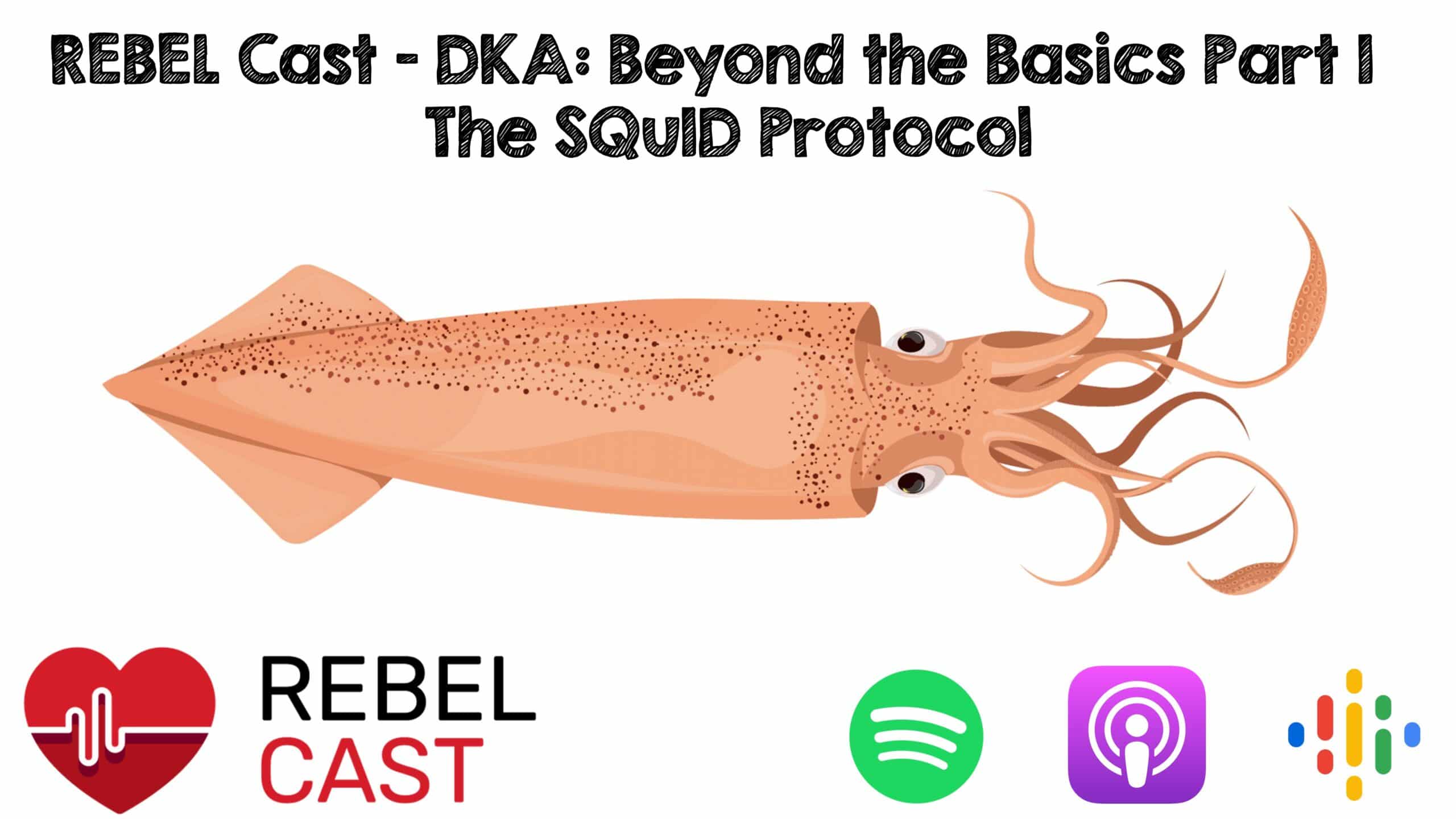/* Style Definitions */
table.MsoNormalTable
{mso-style-name:”Table Normal”;
mso-tstyle-rowband-size:0;
mso-tstyle-colband-size:0;
mso-style-noshow:yes;
mso-style-priority:99;
mso-style-parent:””;
mso-padding-alt:0cm 5.4pt 0cm 5.4pt;
mso-para-margin:0cm;
mso-para-margin-bottom:.0001pt;
mso-pagination:widow-orphan;
font-size:12.0pt;
font-family:Cambria;
mso-ascii-font-family:Cambria;
mso-ascii-theme-font:minor-latin;
mso-hansi-font-family:Cambria;
mso-hansi-theme-font:minor-latin;}
- Provide a basic review of pediatric airway physiology + anatomy
- Discuss predictors of the pediatric difficult airway
- Review the literature on pediatric ER intubation practices and associated complications
- Review Delayed Sequence Intubation (DSI) and the pediatric surgical airway
/* Style Definitions */
table.MsoNormalTable
{mso-style-name:”Table Normal”;
mso-tstyle-rowband-size:0;
mso-tstyle-colband-size:0;
mso-style-noshow:yes;
mso-style-priority:99;
mso-style-parent:””;
mso-padding-alt:0cm 5.4pt 0cm 5.4pt;
mso-para-margin:0cm;
mso-para-margin-bottom:.0001pt;
mso-pagination:widow-orphan;
font-size:12.0pt;
font-family:Calibri;
mso-ascii-font-family:Calibri;
mso-ascii-theme-font:minor-latin;
mso-hansi-font-family:Calibri;
mso-hansi-theme-font:minor-latin;}
- Large occiput + head à Add a shoulder roll to align the airway axes
- Large Tongue à obstruction more common, maneuvers to open the airway may be necessary (eg jaw thrust)
- Superior larynx and anterior vocal cords + floppy epiglottis à visualization can be more challenging, consider a straight blade in younger children to lift the large epiglottis
- Large stomach with relatively small lungs à consider early NG tube
/* Style Definitions */
table.MsoNormalTable
{mso-style-name:”Table Normal”;
mso-tstyle-rowband-size:0;
mso-tstyle-colband-size:0;
mso-style-noshow:yes;
mso-style-priority:99;
mso-style-parent:””;
mso-padding-alt:0cm 5.4pt 0cm 5.4pt;
mso-para-margin:0cm;
mso-para-margin-bottom:.0001pt;
mso-pagination:widow-orphan;
font-size:12.0pt;
font-family:Cambria;
mso-ascii-font-family:Cambria;
mso-ascii-theme-font:minor-latin;
mso-hansi-font-family:Cambria;
mso-hansi-theme-font:minor-latin;}
/* Style Definitions */
table.MsoNormalTable
{mso-style-name:”Table Normal”;
mso-tstyle-rowband-size:0;
mso-tstyle-colband-size:0;
mso-style-noshow:yes;
mso-style-priority:99;
mso-style-parent:””;
mso-padding-alt:0cm 5.4pt 0cm 5.4pt;
mso-para-margin:0cm;
mso-para-margin-bottom:.0001pt;
mso-pagination:widow-orphan;
font-size:12.0pt;
font-family:Calibri;
mso-ascii-font-family:Calibri;
mso-ascii-theme-font:minor-latin;
mso-hansi-font-family:Calibri;
mso-hansi-theme-font:minor-latin;}
- There are many different equations out there to figure out sizing of tubes, blades, masks, etc., but the bottom line is that it’s too much to memorize for something you won’t need to use often, so to reduce error in critical situations use memory aids such as the Broselow tape or your favourite medical app
 |
| PediStat — a commonly used pediatric reference application |
- < 1 year old
- Mallampati score (if attainable) III + IV
- Low BMI
- Children undergoing cardiac and oromaxillofacial surgery patients – likely due to higher proportion craniofacial dysmorphisms eg. Cleft palate, micrognathia
/* Style Definitions */
table.MsoNormalTable
{mso-style-name:”Table Normal”;
mso-tstyle-rowband-size:0;
mso-tstyle-colband-size:0;
mso-style-noshow:yes;
mso-style-priority:99;
mso-style-parent:””;
mso-padding-alt:0cm 5.4pt 0cm 5.4pt;
mso-para-margin:0cm;
mso-para-margin-bottom:.0001pt;
mso-pagination:widow-orphan;
font-size:12.0pt;
font-family:Calibri;
mso-ascii-font-family:Calibri;
mso-ascii-theme-font:minor-latin;
mso-hansi-font-family:Calibri;
mso-hansi-theme-font:minor-latin;}
ER Pediatric Intubation Practices and Complications
1. Pediatric endotracheal intubation is an uncommon procedure, but resulting desaturation and hypotension are frequent complications.
This prospective observational study reviews pediatric intubations in a tertiary pediatric ED. Their primary and secondary outcomes were, respectively, the rate of adverse effects during intubation and the incidence of difficult laryngoscopy and first pass success rate without desaturation and hypotension.
- The incidence of pediatric intubations was found to be 9/10,000
- 79% of intubations were for medical conditions (seizure most commonly), 21% were for trauma
- Median age was 3, with 25% of intubations being in the <1 population
- First pass success rate was 78%
- First pass rate without hypotension or hypoxia was only 49%
- Difficult intubation was seen in 7% of cases, but all intubations were ultimately successful
- Ketamine was the most commonly used mono-agent and was the induction agent of choice in patients with CVS compromise
2. Desaturation and hypotension peri-intubation matter, as they are linked to poor neurologic outcomes and are predictors of airway mortality 12 .
A review of 1081 difficult airways found that 1% were associated with cardiac arrest, all preceded by hypoxemia. Occurrence of complications in the difficult airway was associated with:
- More than two intubation attempts
- Weight < 10kg
- Short thyromental distance
- 3 direct laryngoscopy attempts before switching to indirect technique
3. Direct Laryngoscopy is a reasonable first line choice, but the Pediatric Difficult Intubation (PeDI) registry data suggests we should be thinking about switching to an indirect method much sooner if we run into trouble.
In fact, first attempt success rates in the pediatric difficult airway population were found to be substantially higher in Video than in Direct Laryngoscopy (55 % vs 3 %)4. This begs the question as to whether community and ERs that see primarily adults should be stocking pediatric video laryngoscopes?
Keep in mind, though, that this is the difficult airway population, which we know is quite rare. A systematic review of 14 prospective RCTs comparing video vs direct in the pediatric population concluded that although video improved glottis visualization, it was associated with prolonged time to intubation — something to consider given the considerably reduced safe apnea time in children.
/* Style Definitions */
table.MsoNormalTable
{mso-style-name:”Table Normal”;
mso-tstyle-rowband-size:0;
mso-tstyle-colband-size:0;
mso-style-noshow:yes;
mso-style-priority:99;
mso-style-parent:””;
mso-padding-alt:0cm 5.4pt 0cm 5.4pt;
mso-para-margin:0cm;
mso-para-margin-bottom:.0001pt;
mso-pagination:widow-orphan;
font-size:12.0pt;
font-family:Calibri;
mso-ascii-font-family:Calibri;
mso-ascii-theme-font:minor-latin;
mso-hansi-font-family:Calibri;
mso-hansi-theme-font:minor-latin;}
Delayed Sequence Intubation and The Pediatric Surgical Airway
Scott Weingart’s group has paved the way for future studies on Delayed Sequence Intubation (DSI)1; keep an eye out for this in the pediatric population as it’s easy to see how it might be useful in the agitated hypoxic child that needs to be intubated.
The concept is to use ketamine as an induction agent to facilitate pre-oxygenation while keeping the patient spontaneously breathing in situations where RSI would likely lead to hypoxia. While the evidence is still in it’s infancy, case reports 2,3 are surfacing of DSI being successfully used to secure the airway in agitated hypoxic and critically ill patients.
 |
| ASA 2013 Difficult Airway Algorithm
/* Style Definitions */ table.MsoNormalTable {mso-style-name:”Table Normal”; mso-tstyle-rowband-size:0; mso-tstyle-colband-size:0; mso-style-noshow:yes; mso-style-priority:99; mso-style-parent:””; mso-padding-alt:0cm 5.4pt 0cm 5.4pt; mso-para-margin:0cm; mso-para-margin-bottom:.0001pt; mso-pagination:widow-orphan; font-size:12.0pt; font-family:Cambria; mso-ascii-font-family:Cambria; mso-ascii-theme-font:minor-latin; mso-hansi-font-family:Cambria; mso-hansi-theme-font:minor-latin;}
Finally, if you find yourself in the exceedingly rare but completely terrifying can’t intubate, can’t ventilate scenario with a pediatric patient, remember that needle cricothyrotomy is indicated in younger children14.
/* Style Definitions */ table.MsoNormalTable {mso-style-name:”Table Normal”; mso-tstyle-rowband-size:0; mso-tstyle-colband-size:0; mso-style-noshow:yes; mso-style-priority:99; mso-style-parent:””; mso-padding-alt:0cm 5.4pt 0cm 5.4pt; mso-para-margin:0cm; mso-para-margin-bottom:.0001pt; mso-pagination:widow-orphan; font-size:12.0pt; font-family:Calibri; mso-ascii-font-family:Calibri; mso-ascii-theme-font:minor-latin; mso-hansi-font-family:Calibri; mso-hansi-theme-font:minor-latin;}
Dr. Rebecca Brown, MD, CCFP is a 3rd year resident in the CCFP-EM program at the University of Ottawa.
Edited and Formatted by Dr. Rob Suttie, PGY2 at the University of Ottawa
References
1. Weingart SD, Trueger NS, Wong N, Scofi J, Singh N, Rudolph SS. Delayed Sequence Intubation: A Prospective Observational Study. Ann Emerg Med. 2015;65:349-355.
2. Miescier MPH MJ, Bryant RJ, Nelson DS. Delayed sequence intubation with ketamine in 2 critically ill children ☆. Am J Emerg Med. 2016;34:1190.e1-1190.e2.
5. Nishisaki A, Turner D a, Brown C a, Walls RM, Nadkarni VM. A National Emergency Airway Registry for children: landscape of tracheal intubation in 15 PICUs. Crit Care Med. 2013;41(3):874-885
6. Walls RM. Emergency Airway Management: A Multi-Center Report of 8937 Emergency Department Intubations. J Emerg Med. 2011;41(4).
7. Anesthesiologists A society of. Practice Guidelines for Management of the Difficult Airway. Anesthesiology. 2013;118(2):251-270
8. Choi HJ, Je SM, Kim JH, Kim E. The factors associated with successful paediatric endotracheal intubation on the first attempt in emergency departments: A 13-emergency-department registry study. Resuscitation. 2012;83(11):1363-1368
9. CotÉ CJ, Hartnick CJ. Pediatric transtracheal and cricothyrotomy airway devices for emergency use: Which are appropriate for infants and children? Paediatr Anaesth. 2009;19(SUPPL. 1):66-76.
10. Fiadjoe JE, Stricker PA, Litman RS. Pediatric Airway Management. Greg Pediatr Anesth Fifth Ed. 2011;26:300-329
11. Gencorelli FJ, Fields RG, Litman RS. Complications during rapid sequence induction of general anesthesia in children: A benchmark study. Paediatr Anaesth. 2010;20(5):421-424.
12. Heffner AC, Swords DS, Neale MN, Jones AE. Incidence and factors associated with cardiac arrest complicating emergency airway management. Resuscitation. 2013; 84(11):1500-1504.
14. Jagannathan N, Sohn L, Fiadjoe JE. Paediatric difficult airway management: what every anaesthetist should know! Br J Anaesth. 2016;(i)
16. Walls, R. Manual of Emergency Airway Management, 2012, 4th Edition 1.
/* Style Definitions */ table.MsoNormalTable {mso-style-name:”Table Normal”; mso-tstyle-rowband-size:0; mso-tstyle-colband-size:0; mso-style-noshow:yes; mso-style-priority:99; mso-style-parent:””; mso-padding-alt:0cm 5.4pt 0cm 5.4pt; mso-para-margin:0cm; mso-para-margin-bottom:.0001pt; mso-pagination:widow-orphan; font-size:12.0pt; font-family:Cambria; mso-ascii-font-family:Cambria; mso-ascii-theme-font:minor-latin; mso-hansi-font-family:Cambria; mso-hansi-theme-font:minor-latin;} |
/* Style Definitions */
table.MsoNormalTable
{mso-style-name:”Table Normal”;
mso-tstyle-rowband-size:0;
mso-tstyle-colband-size:0;
mso-style-noshow:yes;
mso-style-priority:99;
mso-style-parent:””;
mso-padding-alt:0cm 5.4pt 0cm 5.4pt;
mso-para-margin:0cm;
mso-para-margin-bottom:.0001pt;
mso-pagination:widow-orphan;
font-size:12.0pt;
font-family:Cambria;
mso-ascii-font-family:Cambria;
mso-ascii-theme-font:minor-latin;
mso-hansi-font-family:Cambria;
mso-hansi-theme-font:minor-latin;}















